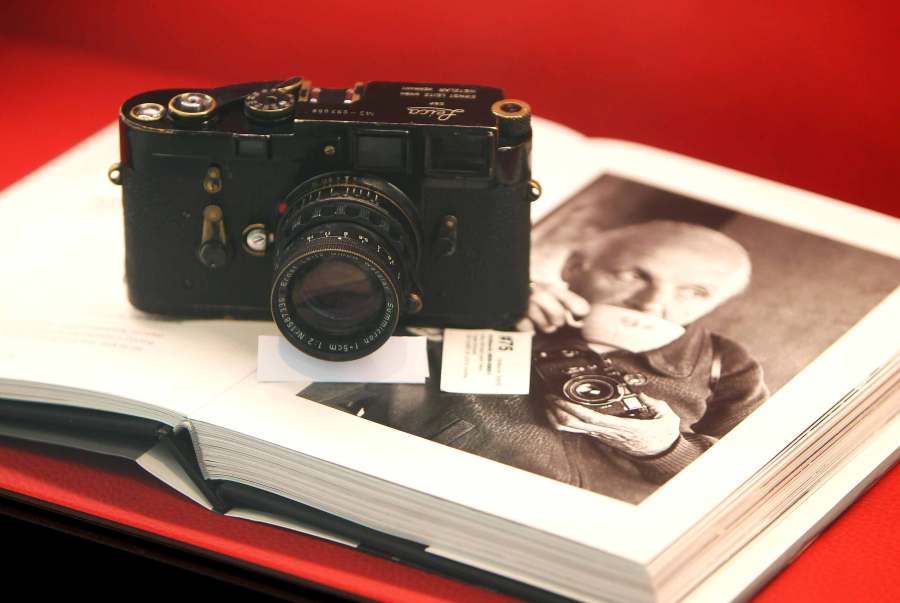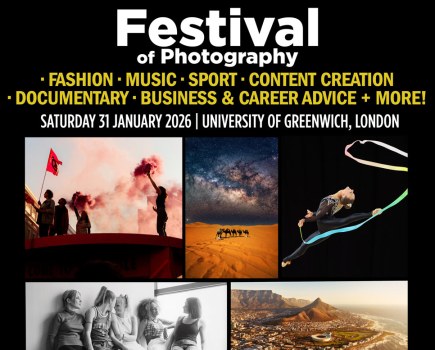We could easily devote half of this website to famous Leica users, as so many great photographers had (or have) a lifelong allegiance to the red dot. Here we celebrate some of the most significant and influential photographers who’ve been seen with Leica gear around their necks. Given that there has been such a large and distinguished roster of Leica-loving photographers, choosing the selection here has not been an easy task, but we’ve tried to include a mixture of the greats.
Henri Cartier-Bresson (1908-2004)
More than any other photographer, Henri Cartier-Bresson has become synonymous with Leica, and vice versa. The image of the dapper, eagle-eyed Frenchman, gliding along streets all over the world with his Leica M3 carefully concealed, has become an archetype in street photography. Originally trained as a painter and strongly grounded in classic and contemporary European culture, Cartier-Bresson had a huge influence on the development of photojournalism and street photography in the 20th century. He chose Leica because the 35mm cameras were small and discreet, enabling him to capture the ‘decisive moment’ as it unfolded, without attracting undue attention.
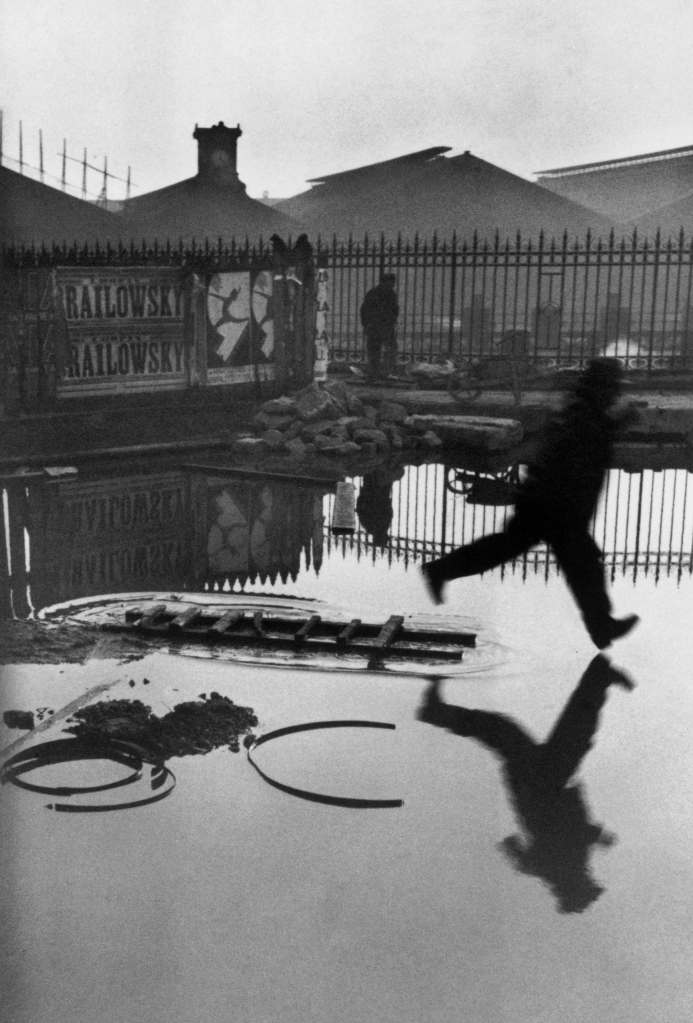
While he favoured a 50mm prime lens for its relatively natural perspective, strongly believing that ‘the camera is an extension of the eye,’ he used a range of Leica bodies throughout his career. Before the Second World War, his cameras of choice were Leica II and III series rangefinders, but he will be forever associated with the Leica M3, which was released in 1953. As he writes in the introduction to his book, The Decisive Moment, published in 1952: ‘I had just discovered the Leica. It became an extension of my eye, and I have never been separated from it since I found it. I prowled the streets all day, feeling very strung-up and ready to pounce, determined to “trap” life – to preserve life in the act of living.’ Cartier-Bresson is Leica.
Inge Morath (1923-2002)
Inge Morath was only the second female member of Magnum Photos and although this quirky and charming image of Linda the Llama has become world famous, she still doesn’t get all the recognition she deserves. Morath joined Magnum in 1949 after meeting Robert Capa, himself a keen Leica user before the Second World War, and was sent to Spain in 1954 for her first big reportage assignment. Her images appeared in Picture Post and other photo-led magazines, shot on a series of Leica M-series rangefinders. As she explained in a biographical article on her website, ingemorath.org, ‘I bought a used Leica, worked incessantly and, as I was known as the only non-photographing person in this milieu and knew I would not be taken seriously if I suddenly showed up with photographs, I turned my name around and, as Egni Tharom, started sending my picture stories to any magazine I thought might be interested.’
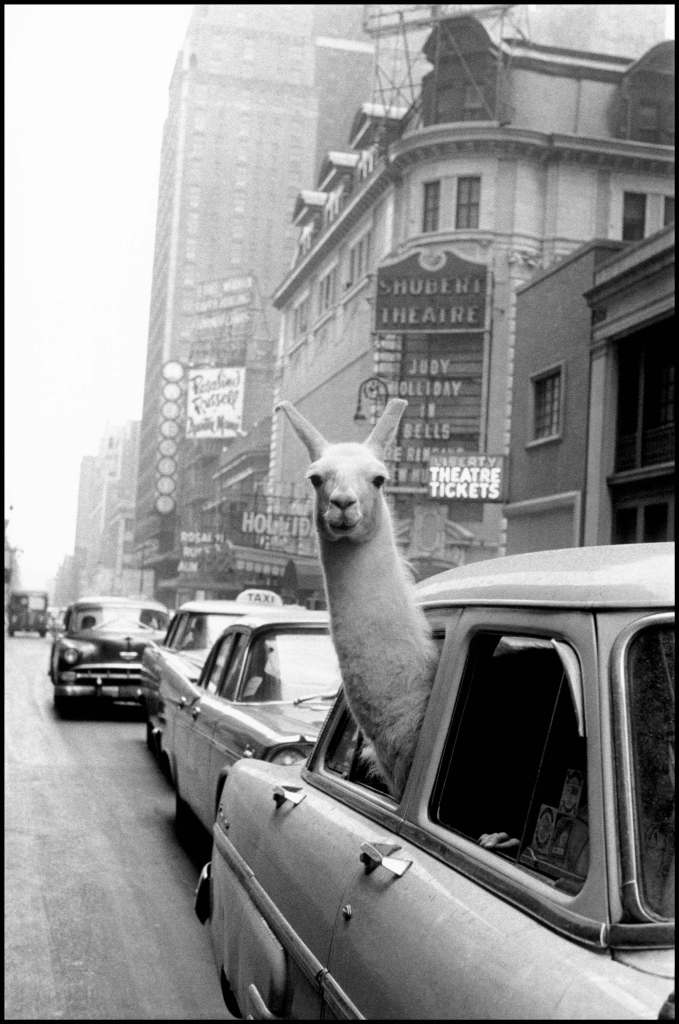
Morath went on working steadily as a documentary, travel and portrait photographer, well into old age.
Fun facts: In 1968 Cartier- Bresson gave her one of his black paint Leica M3s, which later sold for a pile at auction; the pair also worked together shooting stills for the 1960 movie The Misfits, starring Marilyn Monroe and Clark Gable.
Bruce Gilden (born 1946)
Nobody is better known for ‘in your face’ street photography than Bruce Gilden, and although his ruthlessly candid, warts-and-all portraits strike some contemporary viewers as being cold and even exploitative, you can’t deny their impact. A native New Yorker, Gilden certainly isn’t the shy and retiring type, qualities that were definitely required when photographing Yakuza gangsters in Tokyo and Osaka – long before these fascinating cities became such a trendy destination for street photographers.
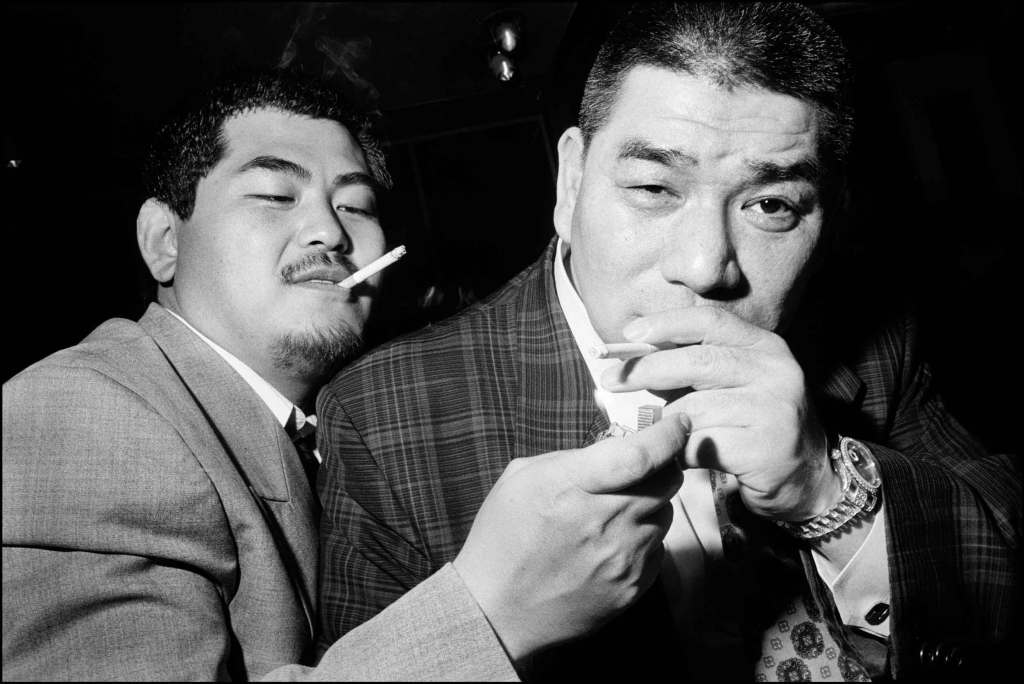
As with Cartier-Bresson, Gilden has long favoured Leica rangefinders and lenses for their relatively compact dimensions and low weight. M-series rangefinders allow him to get up and close and personal to his sometimes surprised subjects, which is a hallmark of his work. ‘One of the reasons I use a Leica is that I couldn’t do what I do – and walk around for as long as I do – if I had a heavy camera that was also quite obvious,’ he said in a 2011 interview. ‘This allows me to do the wonderful pictures that the whole world just loves (oh – some of the world loves). The Leica’s small body is so cute, I used to call it my child. Then I had my daughter and I found out what it was really like to have a child. Wow, I prefer my Leica!’
Tom Stoddart (1953-2021)
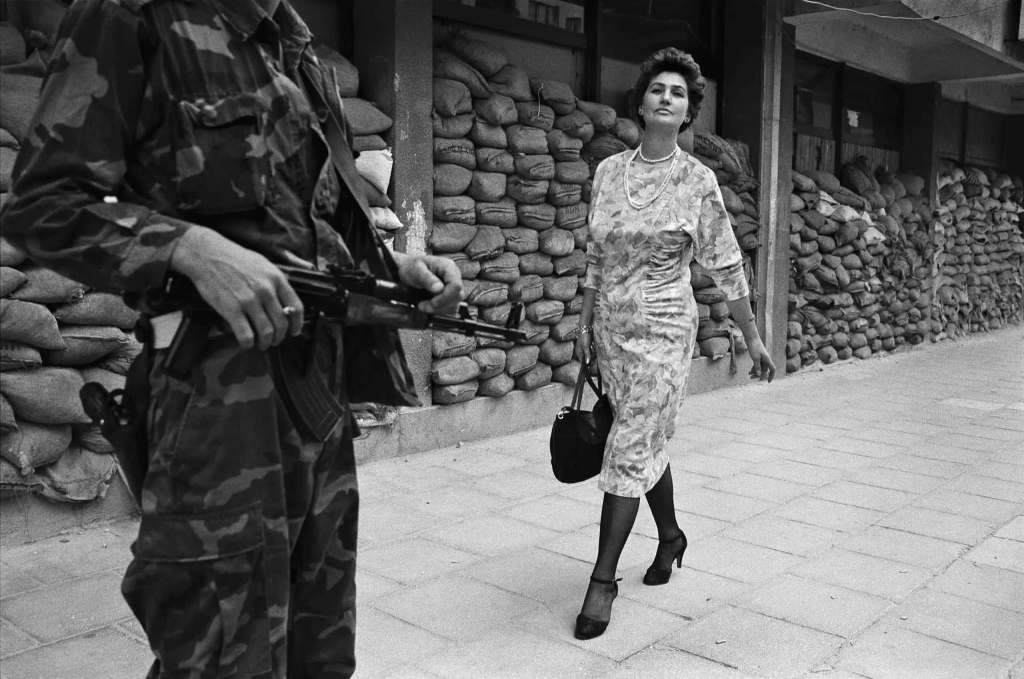
Of all the eminent Leica photographers featured here, Tom Stoddart is the closest to AP’s heart. This eminent and highly respected photojournalist was always generous about giving interviews, and was genuinely humbled to receive our Exceptional Achievement Award in 2020.
Tom began his photographic career on local newspapers in his beloved North East, before moving to London and building a solid reputation as a photojournalist, most notably for his coverage of Desert Storm. He really made his name, however, with his images from the frontline of the civil war in the former Yugoslavia (he was seriously injured by Serbian artillery while covering the siege of Sarajevo in 1992). The image used here, of Meliha Varešanovic striding defiantly down ‘sniper alley’ in the besieged city, is the stuff of legend.
‘I started shooting exclusively on Leica cameras around 1990 with an M6,’ he told AP. ‘Ergonomically, Leicas are beautiful pieces of engineering and the quality of the lenses is a massive plus… Leicas allow you to be inconspicuous, work quickly and quietly and move on to the next situation, much more easily than you can with a huge piece of glass. You make great pictures with your head and your heart, not the camera you’re using, but you want the very best tool available to help you do that.’
Eve Arnold (1912-2012)
Eve Arnold was a pioneering US photojournalist and portrait photographer who shot Hollywood stars, notably Marilyn Monroe, whilst simultaneously exploring racial equality, religion, sexuality and human rights in a fiercely male-dominated industry. In 1957 she became the first woman to join Magnum Photos.
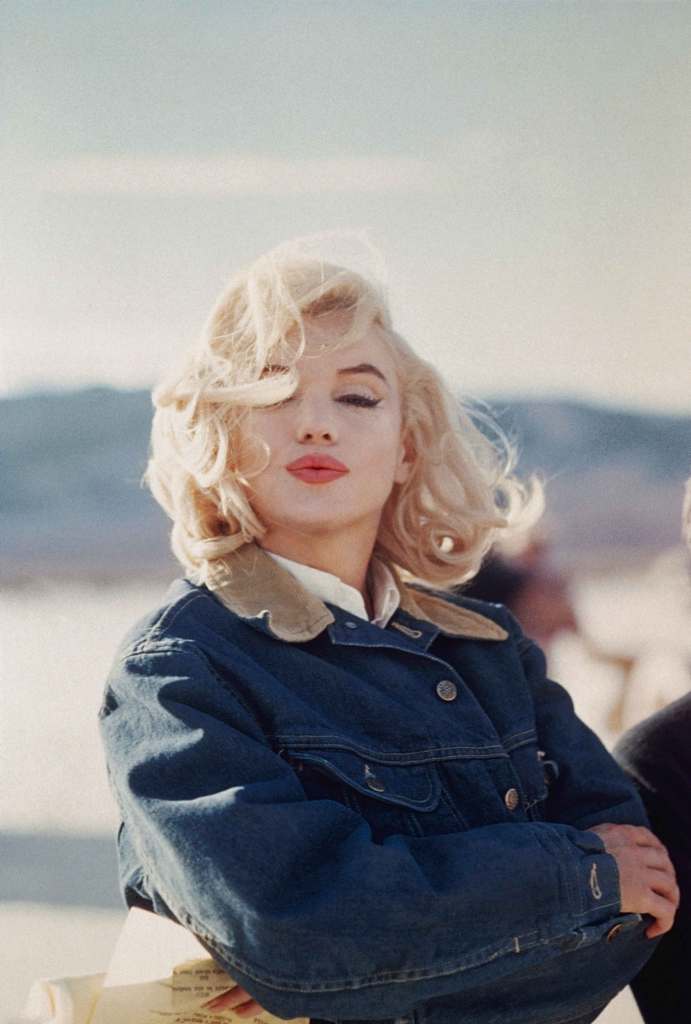
Her start in photography was not auspicious, however. Back in 1950, she attended a masterclass by photographer Alexi Brodovitch in New York, only to have her images ridiculed by the rest of the class. Undeterred, Arnold went out and shot the fashion shows which took place every Sunday in black churches. This time, Brodovitch responded positively to her work, and some of the images were published in Picture Post magazine – catching the eye of Cartier-Bresson and Robert Capa and leading to the historic invitation to join the recently formed Magnum Photos agency.
Cartier-Bresson in particular was a big influence on Arnold, and she too become a keen Leica user; in 1963, Robert Penn photographed her using a Leica M rangefinder and 50mm lens on the set of the Richard Burton movie Becket, though she too went on to use a range of other cameras during her long and storied career.
Susan Meiselas (born 1948)
While Susan Meiselas is arguably best known for her hard-hitting images of the Nicaraguan civil war in the late 1970s, she is also a hugely versatile documentary photographer who’s worked everywhere from Kurdistan to the Black Country (some of her early black & white projects, including strippers at US county fairs, reminds one of the work of another great Leica photographer, Mary Ellen Mark – a comparison we are sure Meiselas would be pleased with). While she’s gone on to use a range of digital gear, Meiselas mainly shot the Sandinista uprising in Nicaragua with Leica M4 and M2 rangefinder cameras, coupled with 28 and 35mm prime lenses.
‘The camera is an excuse to be someplace you otherwise don’t belong,’ she remarked in an interview with the Whitney Museum of Modern Art. ‘It gives me both a point of connection and a point of separation,’ she has remarked.
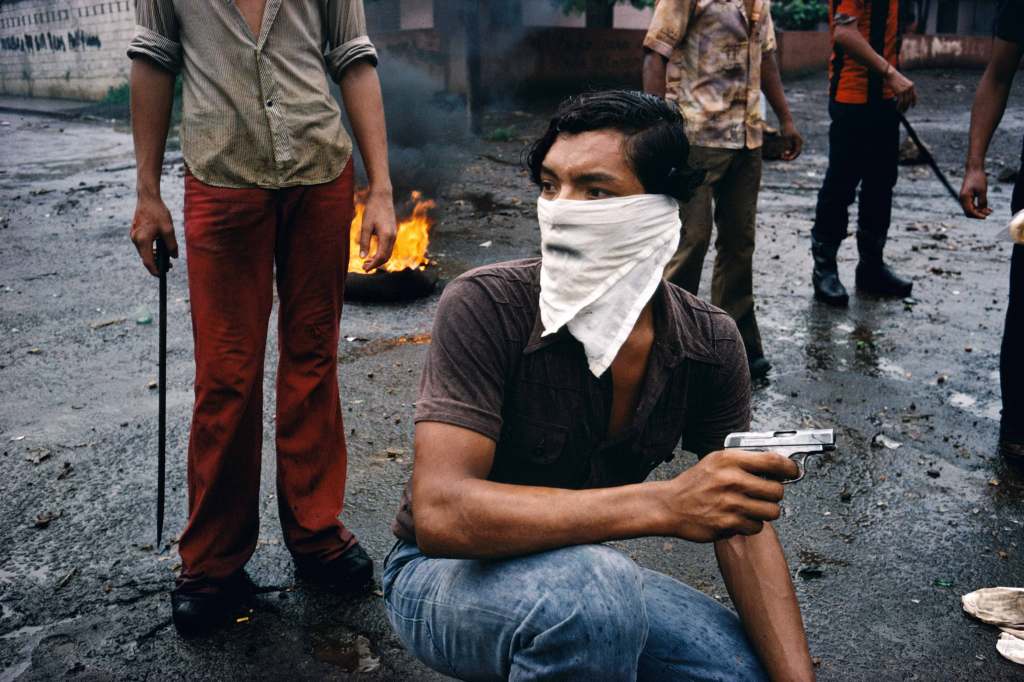
Some of Susan Meiselas’s images from Nicaragua was on display at this year’s Photo Frome festival, which took place in the Somerset town from 5 April to 27 April 25.
Nick Ut (born 1951)
Nick Ut needs no introduction to anyone with an interest in documentary photography, or the often-traumatic history of the 20th century.
His image of burnt and terrified Vietnamese children running from a napalm attack in 1972 can never be forgotten, nor should it be. The shocking picture, which many historians believe helped to end the agony of the Vietnam war, was taken on a Leica M2 coupled with a 35mm f/2 lens and loaded with Kodak Tri-X film.
‘As soon as I clicked the shutter, I knew I had something special,’ Ut told me in a 2022 interview. ‘It took Horst Faas (chief photographer of the Associated Press’s Saigon bureau) to fight for it to be published, but fight he did… and the rest is history.’
The first picture editor to see Ut’s developed image rejected it, fearing that the nudity of the burnt girl meant it could never be published in the US. Unbelievably, the image was almost binned, but Faas, along with Associated Press correspondent Peter Arnett, returned from lunch in the nick of time and realised that they had something very special on their hands. On their orders, the photograph then went from Saigon to Tokyo to New York by radiophoto transmitter, and soon was horrifying the world.
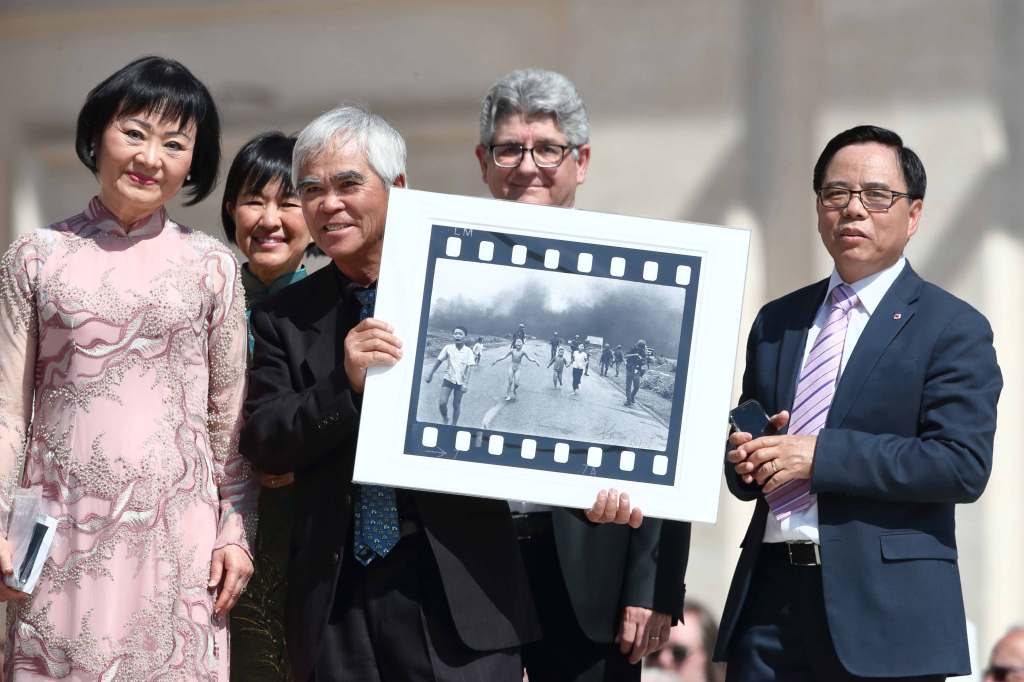
The story of ‘Napalm Girl’ took another twist earlier this year, when a new documentary movie called The Stringer aired allegations that the image was taken by another South Vietnamese photographer, despite Ut getting all the credit and winning a Pulitzer Prize. Both Nick Ut and the Associated Press strongly refute this, and he remains a keen Leica user and evangelist, travelling the world for events and workshops.
Martine Franck (1938-2012)
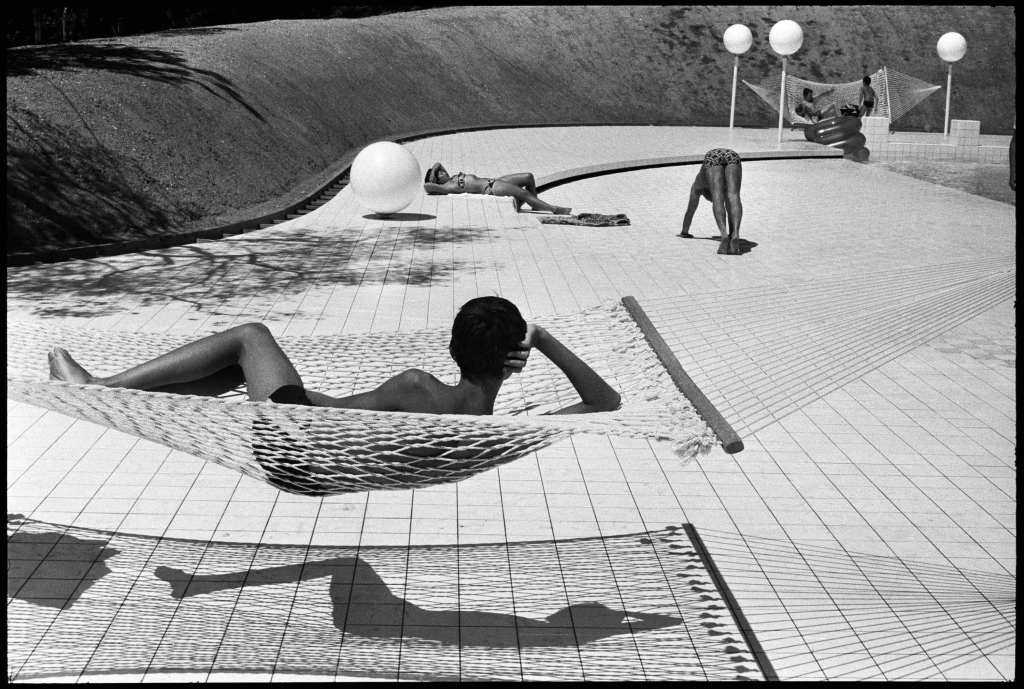
Martine Franck was a British-Belgian documentary and portrait photographer and member of Magnum Photos for over 32 years. Indeed, it was something of a family affair, as she became the second wife of Henri Cartier-Bresson and served as president of the foundation bearing his name.
There was much more to Franck than being Cartier-Bresson’s other half, however. She first made her name as a photographer during a trip to Asia in the early 1960s, taking along a Leica camera that was borrowed from her cousin, coupled with 35mm and 50mm prime lenses.
Following this, she built a strong career as a photographer for various news and fashion magazines, co-founding the Viva picture agency in 1972 and joining Magnum Photos in 1980.
Alex Webb (born 1952)
A hugely versatile and creative photographer, as well as a noted Leica user, Webb became interested in the medium during his high school years – studying photography at the Carpenter Center for the Arts while also earning a degree in history and literature from Harvard University. In 1974 he began working as a professional photojournalist, becoming a full member of Magnum Photos in 1979.
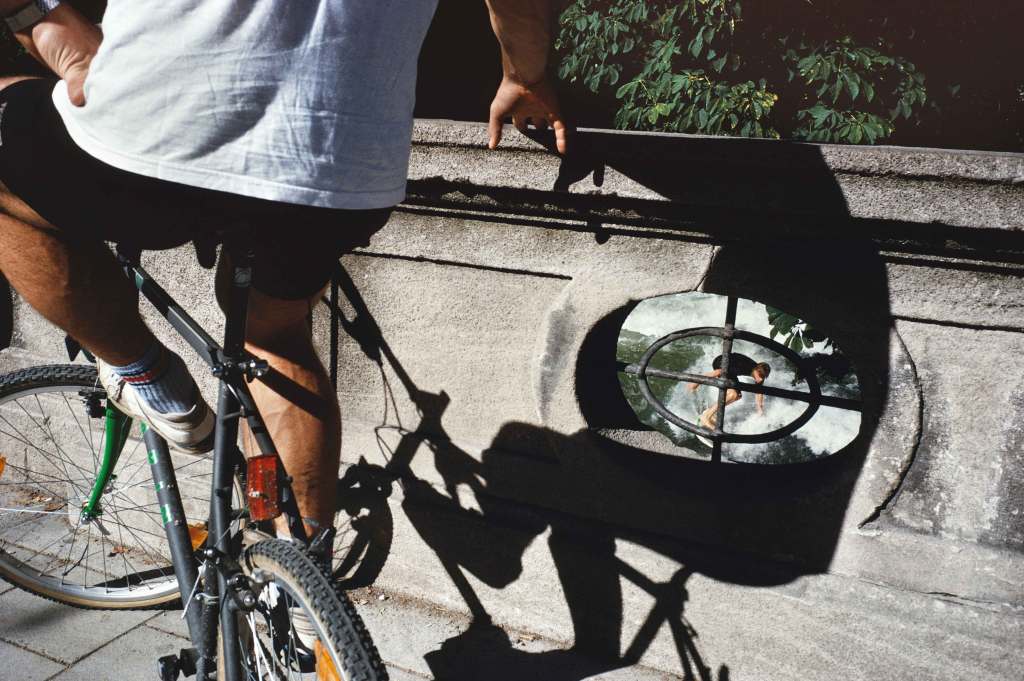
During the mid-1970s, Webb photographed in the American South, documenting small-town life in black & white. He also began working in the Caribbean and Mexico, which prompted his starting to photograph in colour – something which he has continued to do to this day.
‘The first Leica that I owned was an M2,’ Webb told AP in a 2014 interview. ‘I find that working with a rangefinder enables me to work in deep space differently than I would with a single-lens reflex. I like being able to see all elements of the potential photograph in focus simultaneously… I simply take photographs differently with a Leica rangefinder camera than with an SLR.’
Famous for other reasons
Leica has also brought out special-edition cameras and accessories in partnership with famous users who made their name outside the world of photography. Notable examples include a Leica M-P set with US rock star Lenny Kravitz, plus a Leica M Monochrom signature edition with former Police guitarist, Andy Summers.
The company also teamed with US singer Seal on a limited-edition Q2 compact in 2022, and brought out a Leica Q2 ‘007’ edition in 2021 to celebrate the Bond movie, No Time to Die. The most recent celebrity tie-up came last month, when Leica released the Burton Edition of the Sofort 2 instant camera, in partnership with snowboard pioneer and long-time Leica user, Jake Burton Carpenter.
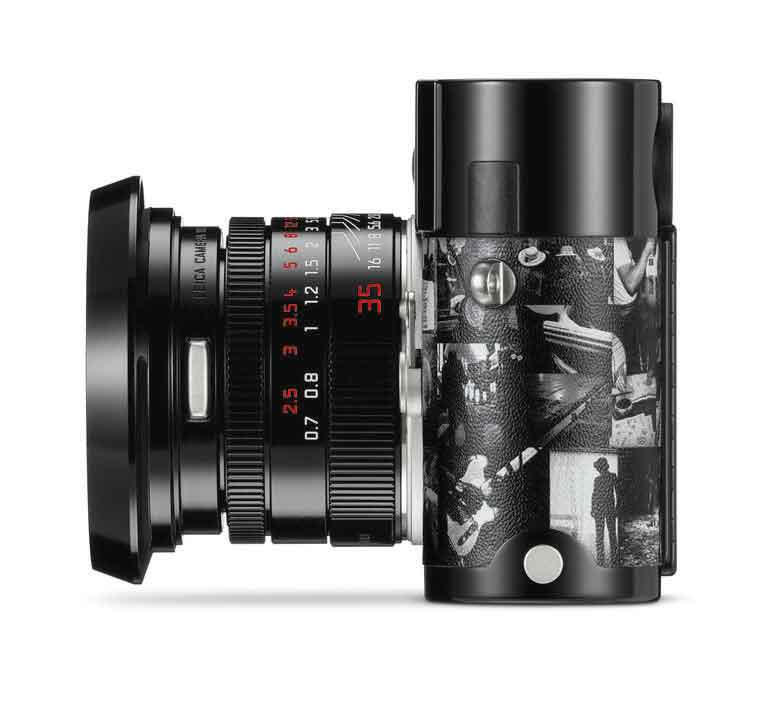
Related reading:
- New Leica M EV1 with electronic viewfinder
- How the worlds first Leica camera came to be
- Best Leica cameras to Buy

